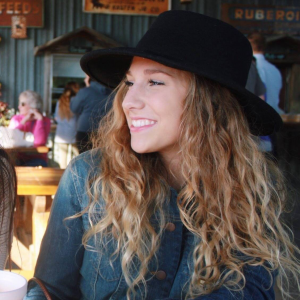By Pablo Peschiera
About the Prize
The Hope College Academy of American Poets (AAP) Prize award is funded by the University and College Poetry Prize program of the AAP. The academy began the program in 1955 at 10 schools, and now sponsors nearly 200 annual prizes for poetry at colleges and universities nationwide. Poets honored through the program have included Mark Doty, Louise Gluck, Joy Harjo, Robert Hass, Robert Pinsky, Sylvia Plath, Gjertrud Schnackenberg and Charles Wright. The winning poet receives $100.
Judged by Brian Barker
Brian Barker is the author of The Animal Gospels (Tupelo Press, 2006) and The Black Ocean (Southern Illinois University Press, 2011), winner of the Crab Orchard Open Competition. His poems, reviews, and interviews have appeared or are forthcoming in such journals as American Poetry Review, Poetry, Diagram, Kenyon Review Online, Indiana Review, Ploughshares, TriQuarterly, The Writer’s Chronicle, The Washington Post, The Cincinnati Review, Blackbird, and Pleiades. His awards include an Academy of American Poets Prize and the 2009 Campbell Corner Poetry Prize. He is married to the poet Nicky Beer and teaches at the University of Colorado Denver, where he is a Poetry Editor of Copper Nickel.
Dr. Barker writes:
What a pleasure to read this fine group of finalists for Hope College’s Academy of American Poets University and College Prize. All the poems were quite strong, which made the final decisions difficult.
Winner

Dr. Barker writes:
I love the way “Coelacanth” yokes together a colloquial voice with a probing meditation on otherness and beauty. The second person address to the coelacanth is playful but intimate. The poem surprised me more than once with its metaphoric and narrative leaps that weave together an examination of being, beauty, race/ethnicity, and belonging. An ambitious poem.
Coelacanth
I have been meaning to tell you,
you should google yourself sometime.
Your pictures are all over
the internet. Even the Smithsonian
thinks you are worth
preserving, although they call you
USNM 205871
or “a living fossil”
but it’s just because
we only had your great great
great great great great
uncle’s imprint for decades.
We assumed you were gone
from our living, swimming world,
and then we pulled you up,
all grey and yellowed and ghostly,
and you had bones extending
into limbs that don’t quite move
like fins, and extra fins
compared to Koi and Nemo
and betta fish lagging
on grocery store shelves.
It’s hard to fit you into the places
we’ve made in our minds for what
fish are supposed to be.
Like when Columbus landed
in San Salvador, and the people
weren’t Indians, but there couldn’t
be any land to the West
other than India in his mind.
And their different skin
made them not
European and so Indian.
We found you in the Indian Ocean,
and we keep finding more
except never alive by the time they reach
the surface, because you live
in that twilight zone depth
where the pressure could kill
us in so many ways.
And we already do such a good job
of that, with the pressures
to be something that fits
into people’s minds.
But if you dive a little deeper, past
all the negative comments
on the internet, you might find
your scientific name: Latimeria.
You’re named after a woman:
Miss Marjorie Courtenay-Latimer,
who noticed you in a fish market among
all sorts of sharks, she said,
you were the most beautiful fish
she’d ever seen.
She knew your characteristics were special
because they’re “ancestral”
which could sound a lot like other bad things
like primitive or old or out-of-date,
yet so many of us humans—The Chinese,
some Africans and Native Americans
(who we used to call Indians)
—worship ancestors with hazy
pictures and food and the smell
of spice and the past, and these days,
antique stores and department stores
raise prices on “vintage” items
that are really just out-of-date or old or primitive.
And Miss Marjorie, she got it,
after hours alone at the museum, setting
specimens in place, waiting
for the reason she left nursing school
for this museum at the bottom
of Africa, with a bottled
piglet with six legs,
and six sick birds,
waiting for someone to tell her
it was the right choice. Maybe
when she saw you, she saw
the way your silver scales, scattered
like bald spots, mirror the sky.
Maybe she knew that the data
and comparison to fossils
and lab work would mean more
than the color of your fins,
but at first that didn’t matter.
She just wanted someone to say,
you’re beautiful.
Honorable Mention

Dr. Barker Writes:
I admire the way “Flower Body” takes familiar symbols of sexuality—blossoming and ripe fruit—and refashions them in a lyric exploration of vulnerability and eroticism. I love the metamorphosis in the last stanza of the blooming body into the dangerous brambles, but a danger met, ultimately, by a lover’s tenderness. All of this is wrapped up in a rich poetic music as sensual and visceral as the imagery itself.
Flower Body
I like to talk about hips and curves.
Imagine my body not weeping but blooming
like blossoms on the cherry tree
or falling, heavy and swollen, to the earth
like the overripe fruit on my sister’s chest.
In a spoon, I glimpse my lip bulging
in a ribbon of silver and think myself
a figured thing. Fruit bruises in a bowl
on the counter and my hips open
against their skin – petals of bone spreading
into a shape you can hold. A smudged edge
curling in the pink of your palm
like the infant bud of a bellflower.
In a car, you slip a hand around my waist
and I am the bramble you are caught in,
my suckering roots around your fingers,
but you are kissing my thorns
with the diligence of a gardener
tending the flourishing forsythia,
wrapping my edges
with the soft of your hands.

